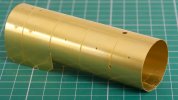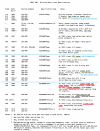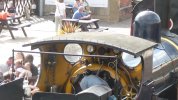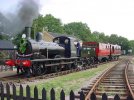I am moving on to building my Y14 and I would much appreciate advice on the boiler especially boiler bands . . .
The GER built three sets of batches on which I could base my model (see the attachment at the end of this post):
- R23, T23, Y23, U25, Y25, running numbers 845 to 894 (1889 - 1890) : 3 ring boiler with flat grate (needs chassis modifications)
- L28, N28, P28, running numbers 895 to 924 (1891) : 3 ring boiler with sloped grate
- S28, X28 running numbers 925 to 945 (1891 - 1892) : 2 ring boiler with sloped grate
The second and third sets of batches are better for me because the Connoisseur kit represents a model with a sloped grate.

This is the boiler from the kit, supplied pre-rolled.
I think this represents a boiler from the third of these designs, that is a 2 ring boiler with a sloping grate. Because the holes for the dome and clack valves are in a forward position.
Please (supposing I have got this right so far) could someone tell me whether such a boiler had boiler bands?
I thought I knew what I was going to build and then someone told me, locomotive number 930 (the one built in a record time) did not have boiler bands. This implies, I might need to have the boiler re-rolled inside out. Then again, if the contemporary three-ring boilers did have boiler bands, and the etched lines are in the correct place, it would be easier for me to move the dome and clack valves.
The attachment is a detailed list of the batches and their variations, have taken from an article
Brooks, Lyn D.
T. W. WORSDELL'S CLASS Y14 0-6-0 (LNER CLASS J-15)
Great Eastern Journal February 1983
and the horizontal blue lines marked enclose the batches I want to choose for my model.









